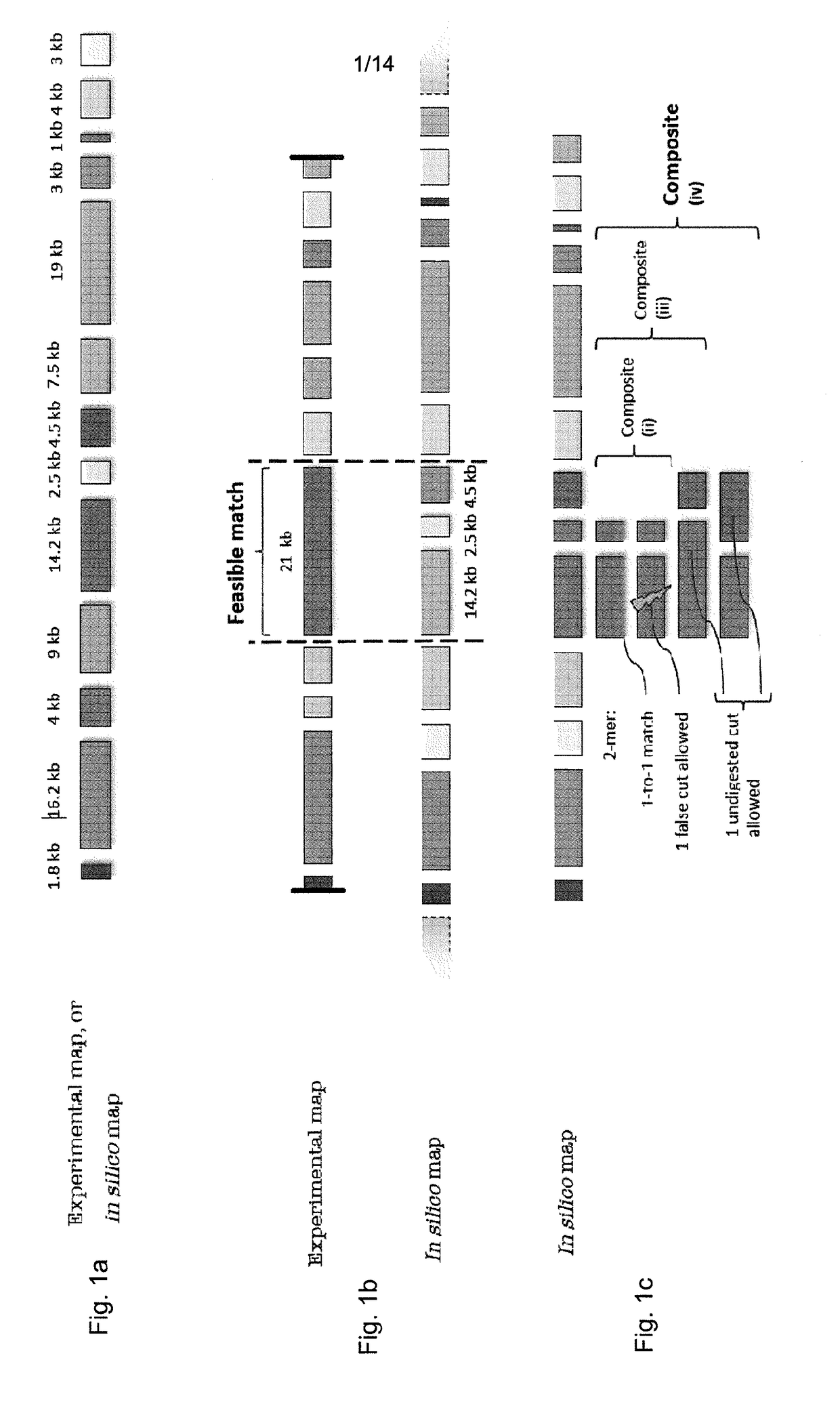Bioinformatics data processing systems
a bioinformatics and data processing technology, applied in the field of bioinformatics data processing systems, can solve the problems of high computational cost, difficult combination of high-throughput sequencing and mapping technologies, and high computational cost of naive all-versus-all dynamic programming, so as to improve sensitivity and save computational time and spa
- Summary
- Abstract
- Description
- Claims
- Application Information
AI Technical Summary
Benefits of technology
Problems solved by technology
Method used
Image
Examples
Embodiment Construction
[0064]We describe a novel seed-and-extend glocal (short for global-local) alignment method, OPTIMA (and a sliding-window extension for overlap alignment, OPTIMA-Overlap), which allows for creating indexes for continuous-valued mapping data while accounting for mapping errors. We also present a novel statistical model, agnostic with respect to technology-dependent error rates, for conservatively evaluating the significance of alignments without relying on expensive permutation-based tests.
[0065]As will be shown, OPTIMA and OPTIMA-Overlap are advantageous over state-of-the-art approaches as they are more sensitive (1.6-2 times more sensitive), more efficient (170-200%) and more precise in their alignments (nearly 99% precision). These advantages are independent of the quality of the data, suggesting that our indexing approach and statistical evaluation are robust, provide improved sensitivity and guarantee high precision.
[0066]High-throughput genome mapping technologies typically work...
PUM
 Login to View More
Login to View More Abstract
Description
Claims
Application Information
 Login to View More
Login to View More - R&D
- Intellectual Property
- Life Sciences
- Materials
- Tech Scout
- Unparalleled Data Quality
- Higher Quality Content
- 60% Fewer Hallucinations
Browse by: Latest US Patents, China's latest patents, Technical Efficacy Thesaurus, Application Domain, Technology Topic, Popular Technical Reports.
© 2025 PatSnap. All rights reserved.Legal|Privacy policy|Modern Slavery Act Transparency Statement|Sitemap|About US| Contact US: help@patsnap.com



